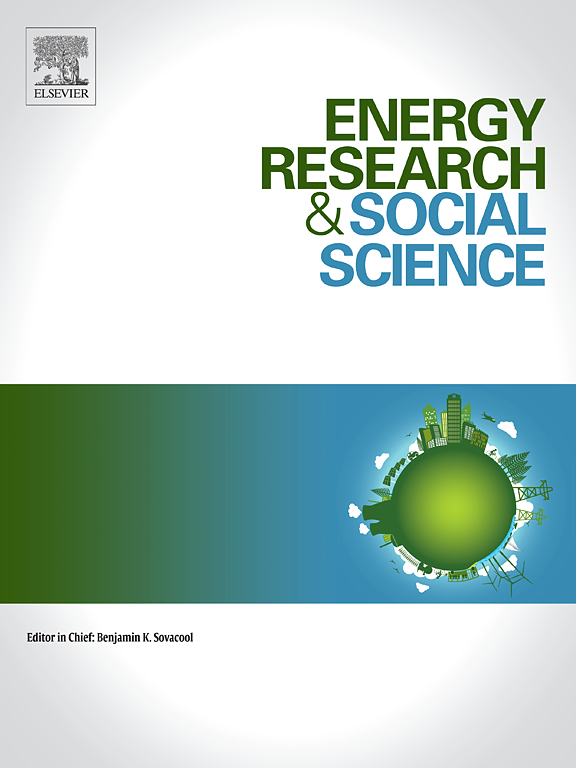被风能和太阳能征服?对沼气技术应用障碍的综合分析
IF 7.4
2区 经济学
Q1 ENVIRONMENTAL STUDIES
引用次数: 0
摘要
十年前,沼气已成为全球向可持续发展过渡的一种有前途的清洁能源。沼气技术可以将有机材料,包括城市、工业和农业废物,以及专门种植的作物,转化为甲烷作为能源载体。消化物可以作为肥料,为植物提供养分,恢复土壤肥力。尽管沼气潜力巨大,但此后全球沼气的部署速度有所放缓。本文提出了一项系统的文献综述,以识别、评估、比较和综合自2015年以来发表的关于从全球角度吸收沼气技术障碍的文章。该分析区分了小型、中型和大型沼气装置,以及低收入、中低收入、中高收入和高收入国家。壁垒分为制度壁垒、技术壁垒、经济壁垒、市场壁垒、信息壁垒、环境壁垒、社会文化壁垒和技术壁垒,称为itemest框架。信息和社会文化障碍在中小型沼气项目中更为常见,而体制、技术、经济、市场和技术障碍在大型项目中占主导地位。虽然该报告对报告的多种障碍进行了分类和分析,但值得注意的是,迄今为止,还没有研究分析风能和太阳能光伏技术价格急剧下降及其相关指数部署作为新沼气项目放缓的重要驱动因素的影响。本文章由计算机程序翻译,如有差异,请以英文原文为准。
Subdued by wind and solar? A comprehensive analysis of barriers to biogas technology uptake
A decade ago, biogas had become a promising clean energy resource for the global transition to sustainability. Biogas technology can convert organic materials, including municipal, industrial, and agricultural wastes, as well as purpose-grown crops, into methane as an energy carrier. The digestate can be used as fertiliser to provide plant nutrients and restore soil fertility. Despite its potential, the global deployment rate of biogas has slowed since. A systematic literature review is presented to identify, evaluate, compare, and synthesise articles published since 2015 on barriers to the uptake of biogas technology from a global perspective. The analysis distinguishes between small, medium and large-scale biogas installations and between low, lower-middle, upper-middle and high-income countries. Barriers are classified as institutional, technological, economic, market, information, environmental, socio-cultural, and technical, referred to as the ITEMIEST framework. Information and socio-cultural barriers are mentioned more often in small and medium-scale biogas, whilst institutional, technological, economic, market and technical barriers dominate for large-scale projects. Whilst the review classifies and analyses the multiple barriers reported, it is noted that to date, there is no study analysing the effect of sharply decreasing prices of wind and solar PV technologies and their associated exponential deployment as an important driver of the slowdown of new biogas projects.
求助全文
通过发布文献求助,成功后即可免费获取论文全文。
去求助
来源期刊

Energy Research & Social Science
ENVIRONMENTAL STUDIES-
CiteScore
14.00
自引率
16.40%
发文量
441
审稿时长
55 days
期刊介绍:
Energy Research & Social Science (ERSS) is a peer-reviewed international journal that publishes original research and review articles examining the relationship between energy systems and society. ERSS covers a range of topics revolving around the intersection of energy technologies, fuels, and resources on one side and social processes and influences - including communities of energy users, people affected by energy production, social institutions, customs, traditions, behaviors, and policies - on the other. Put another way, ERSS investigates the social system surrounding energy technology and hardware. ERSS is relevant for energy practitioners, researchers interested in the social aspects of energy production or use, and policymakers.
Energy Research & Social Science (ERSS) provides an interdisciplinary forum to discuss how social and technical issues related to energy production and consumption interact. Energy production, distribution, and consumption all have both technical and human components, and the latter involves the human causes and consequences of energy-related activities and processes as well as social structures that shape how people interact with energy systems. Energy analysis, therefore, needs to look beyond the dimensions of technology and economics to include these social and human elements.
 求助内容:
求助内容: 应助结果提醒方式:
应助结果提醒方式:


